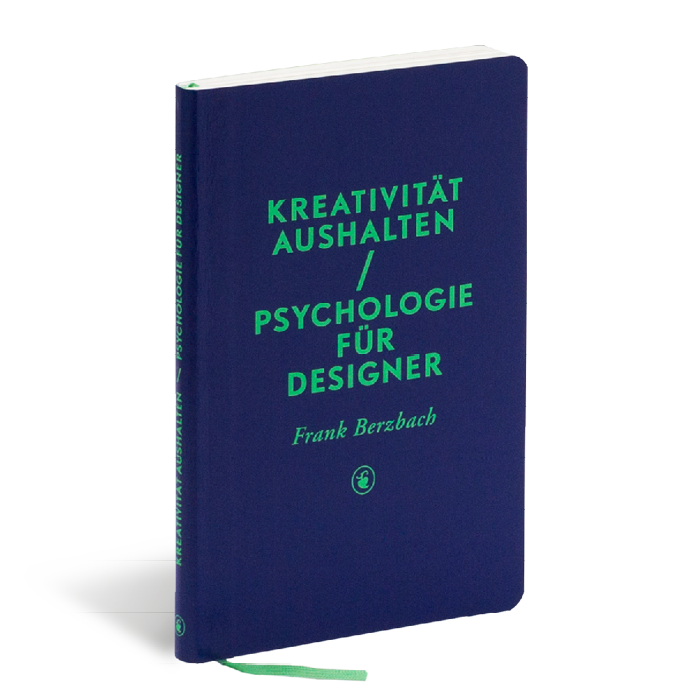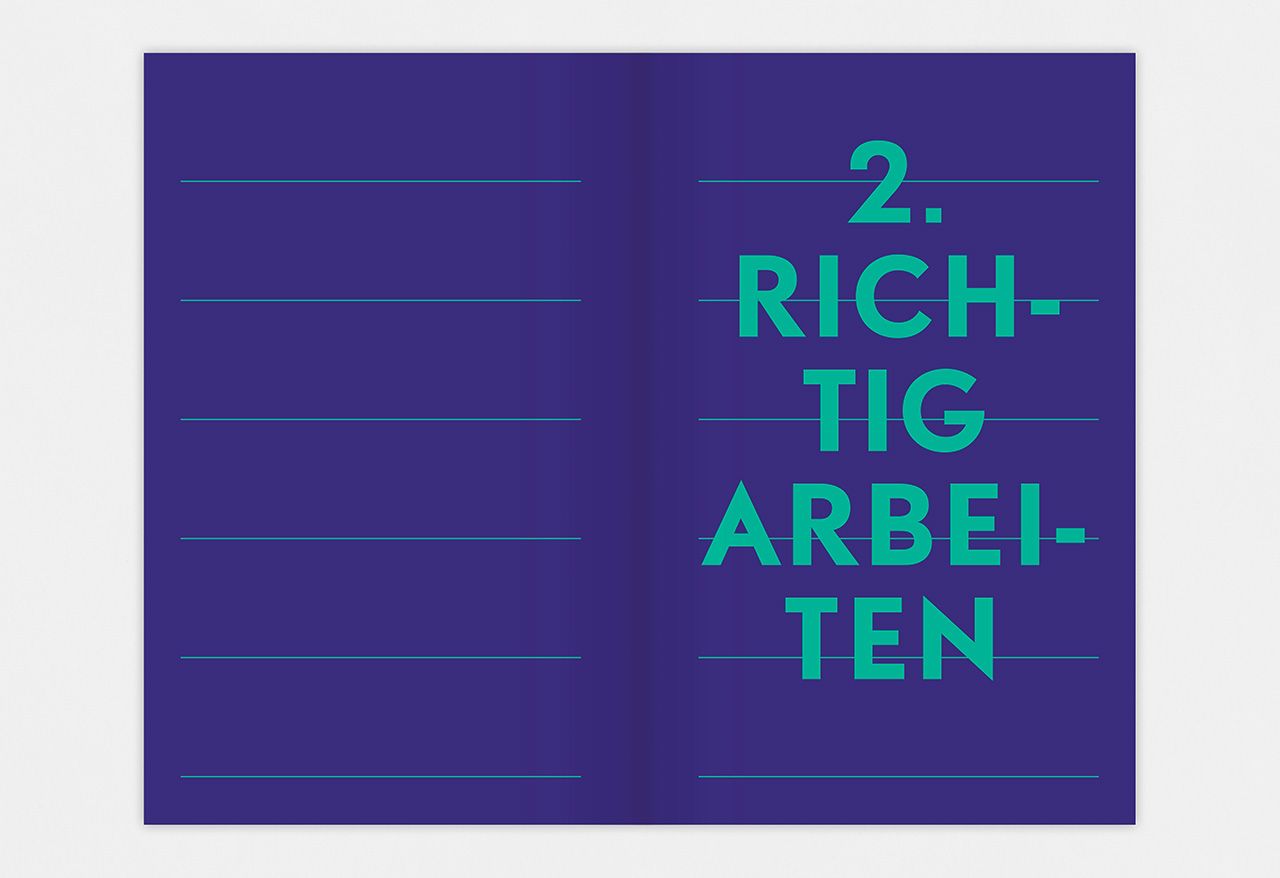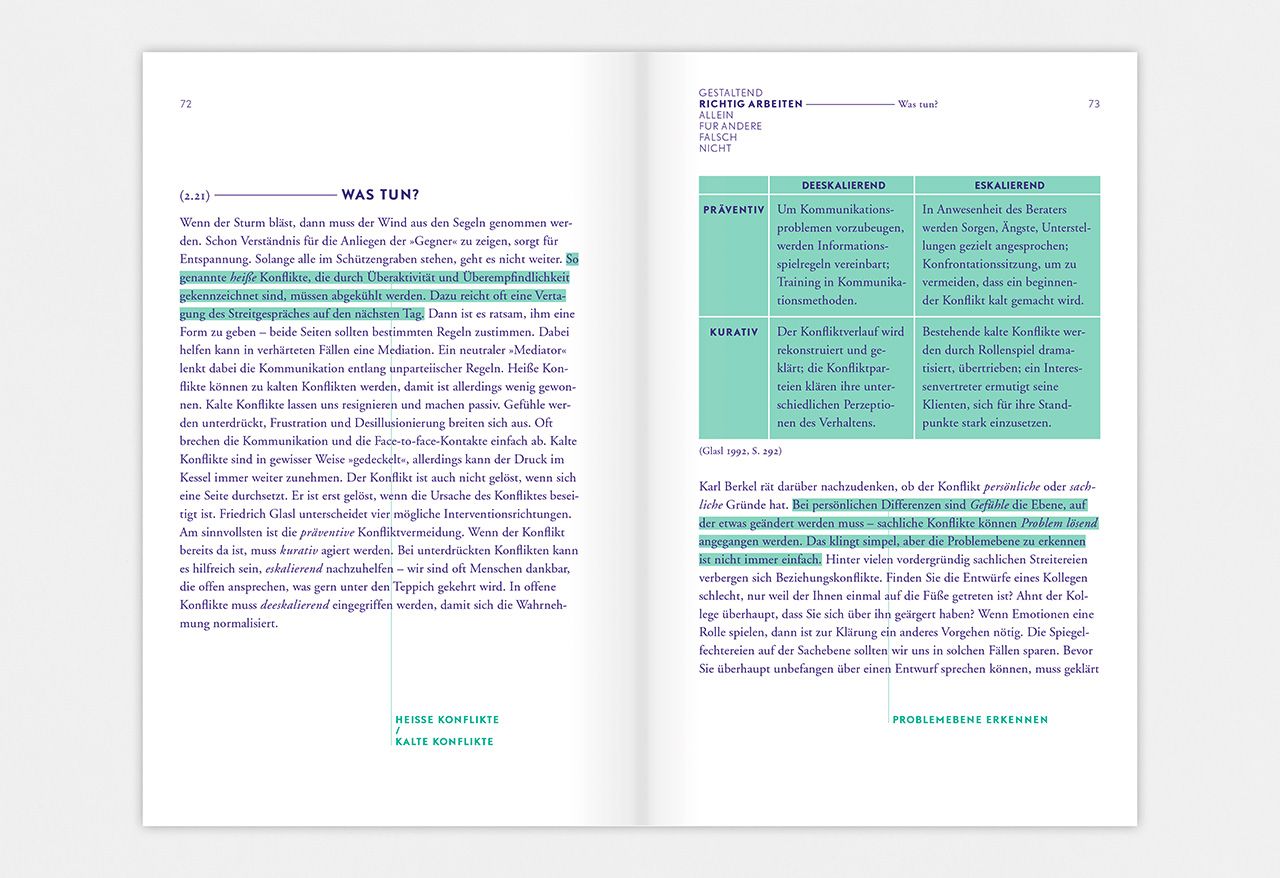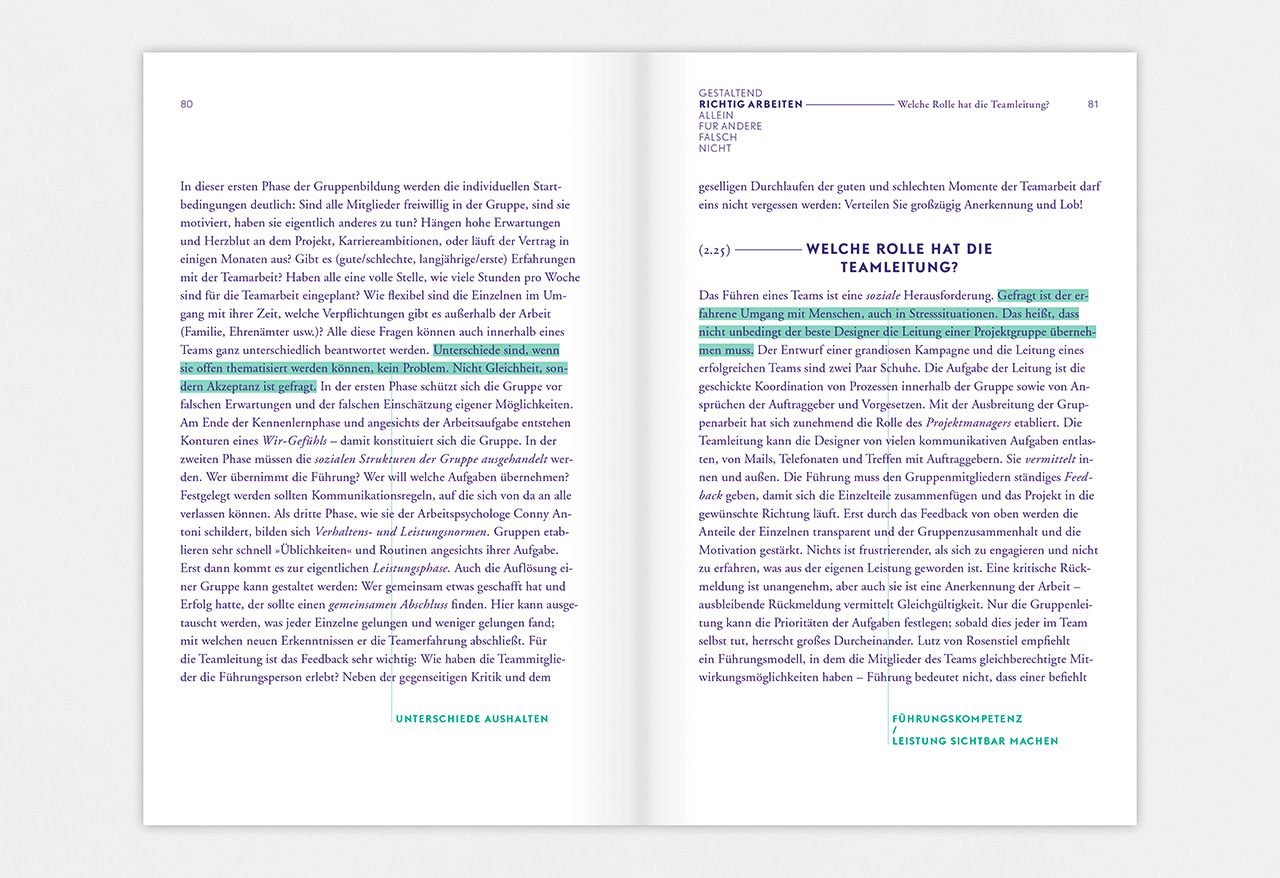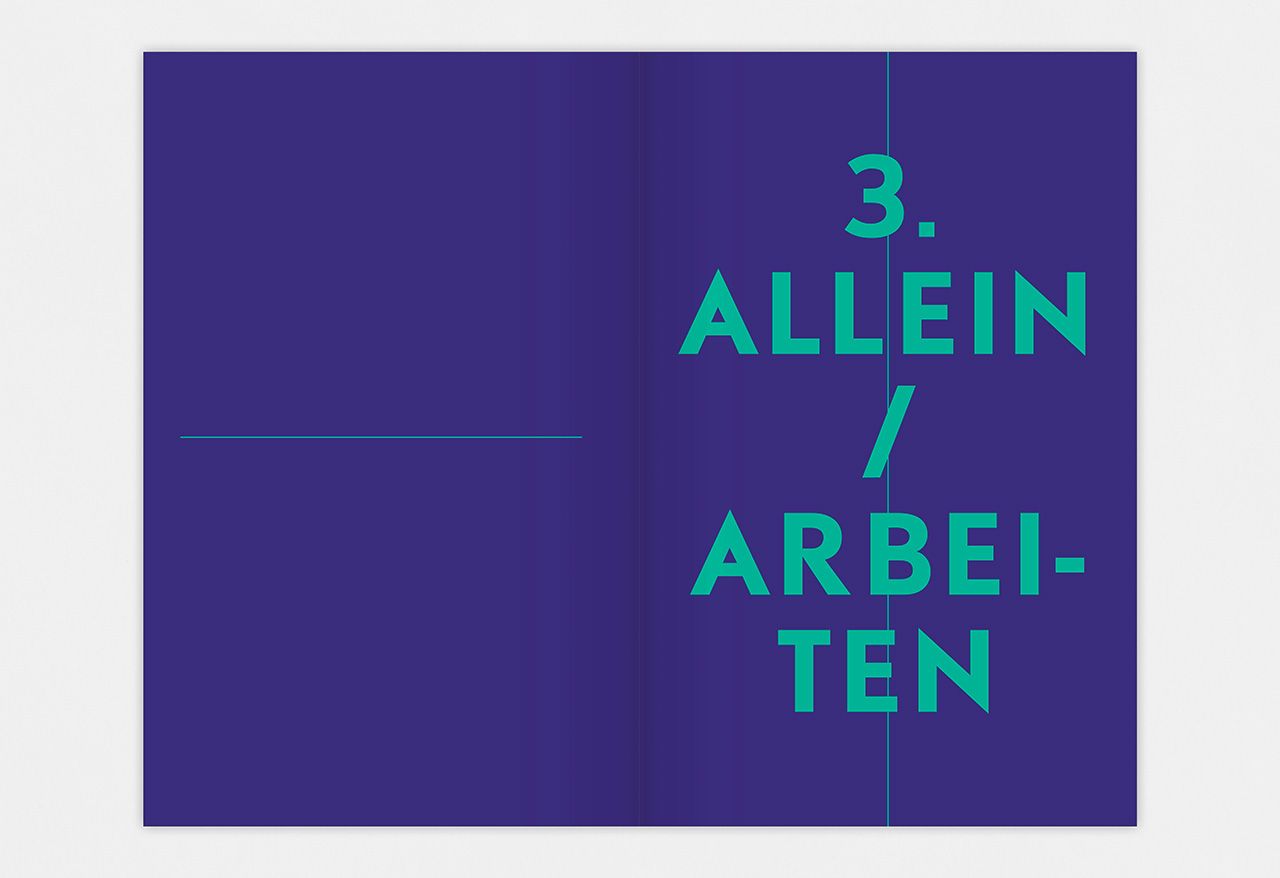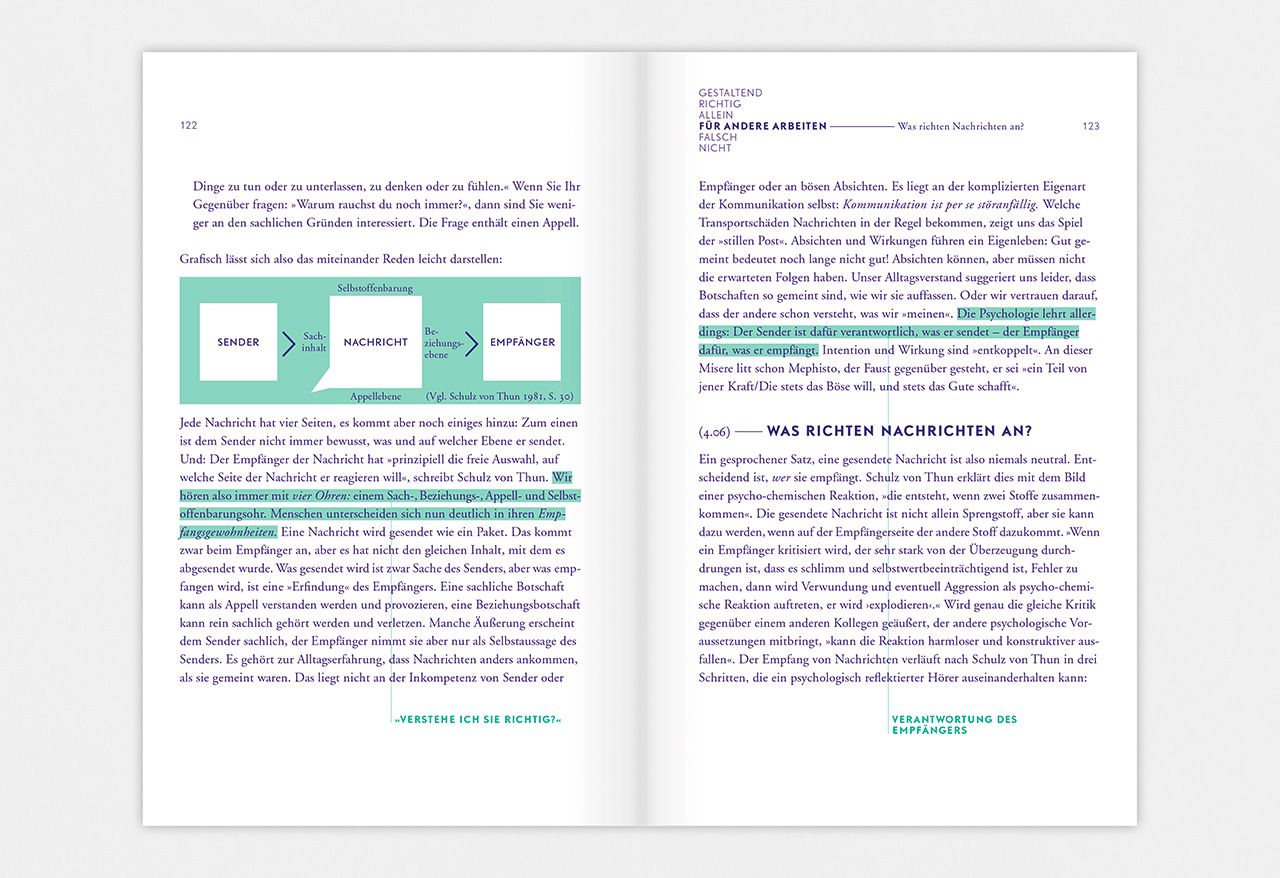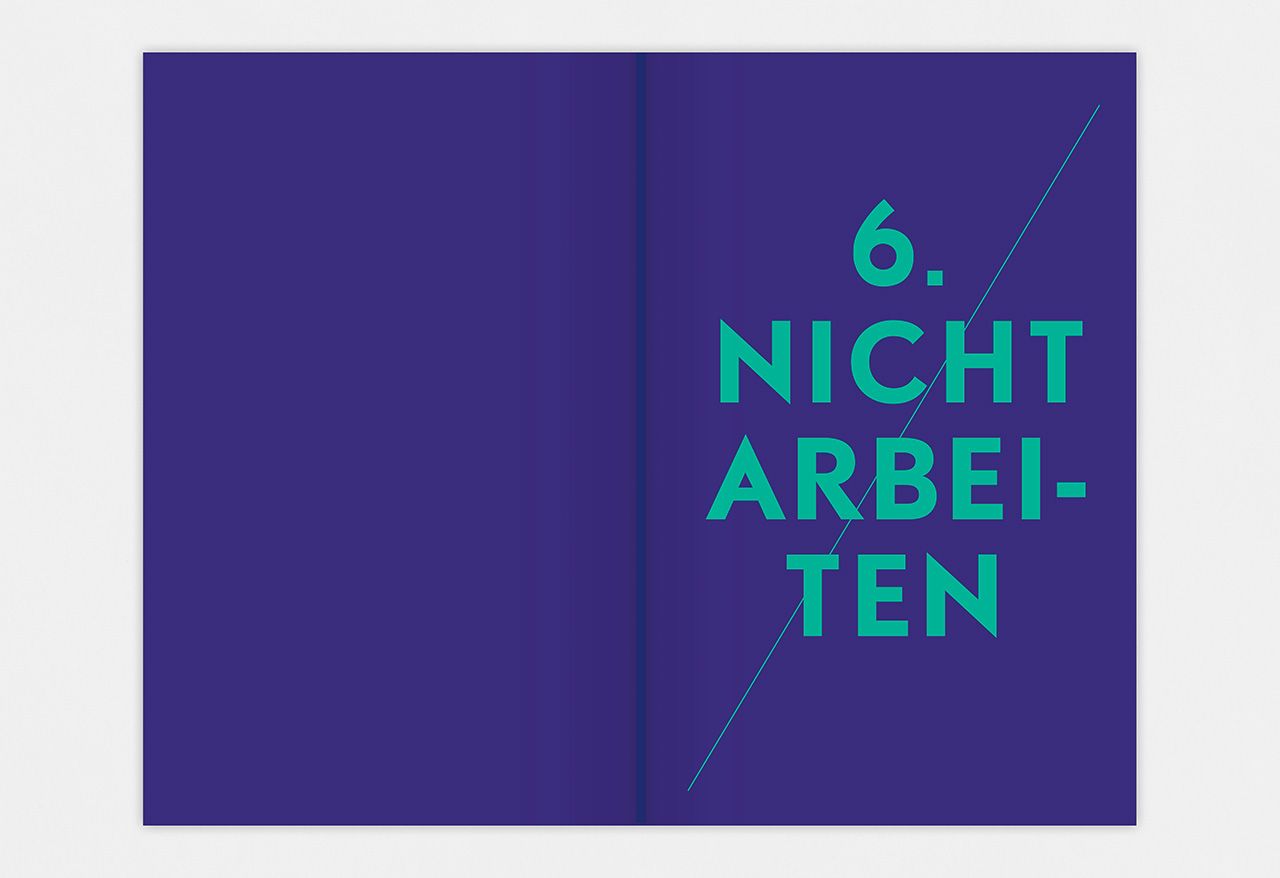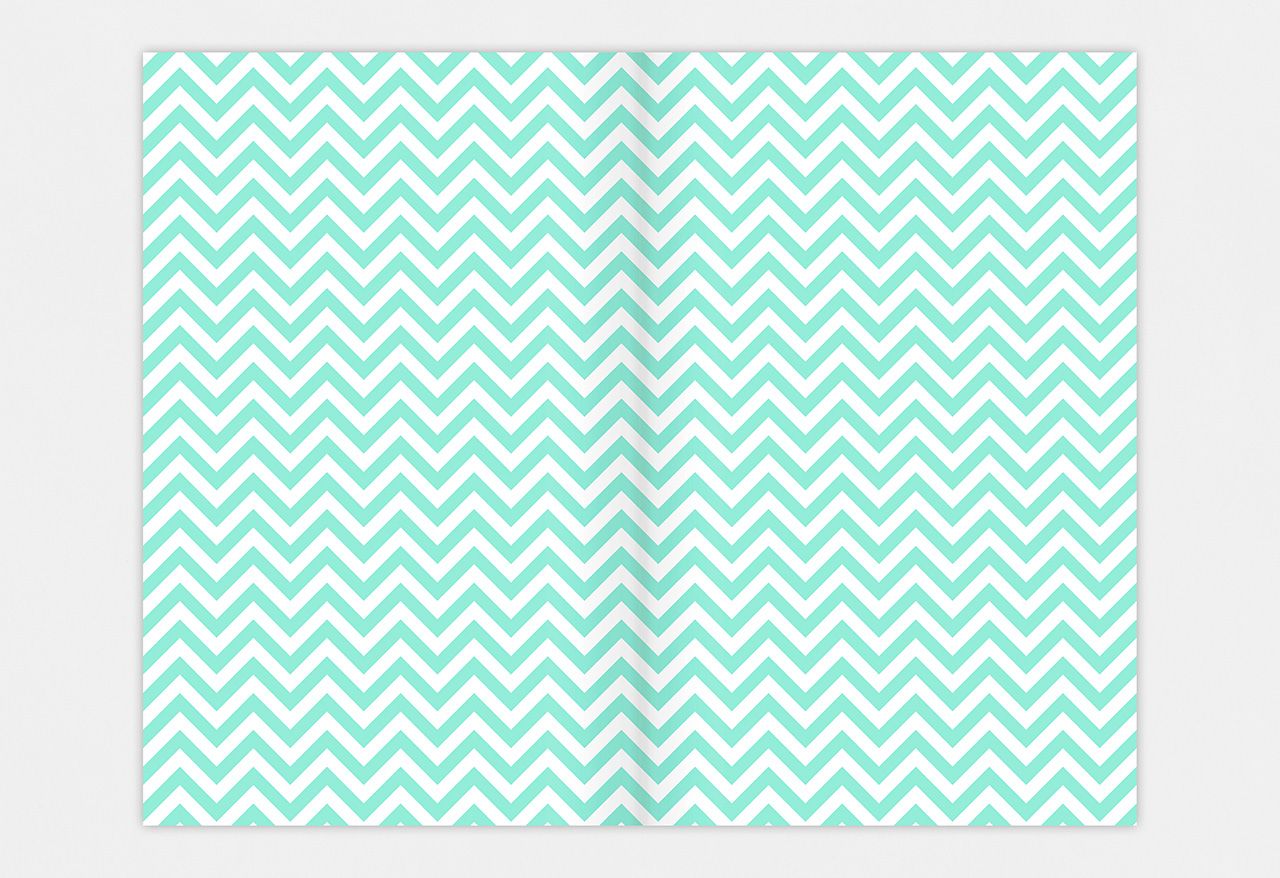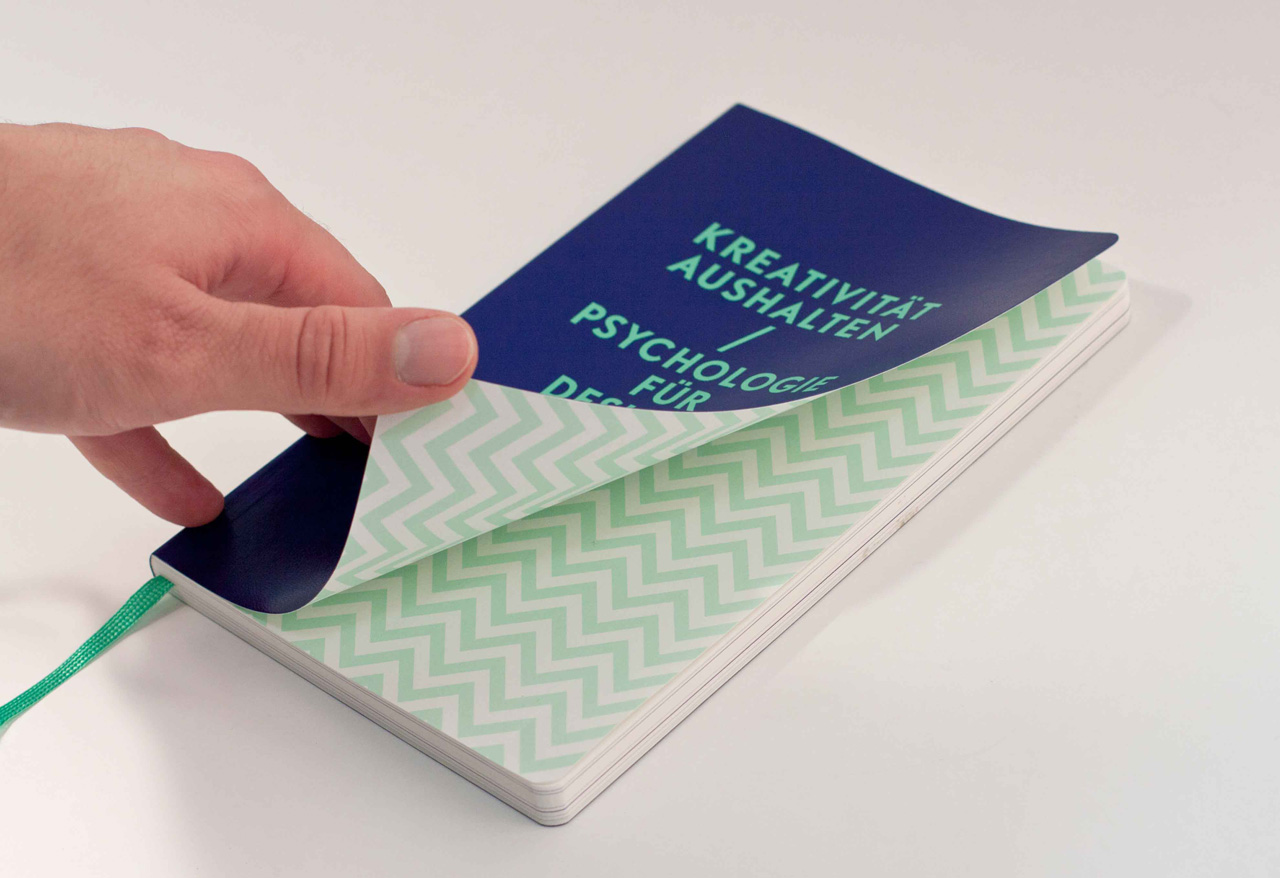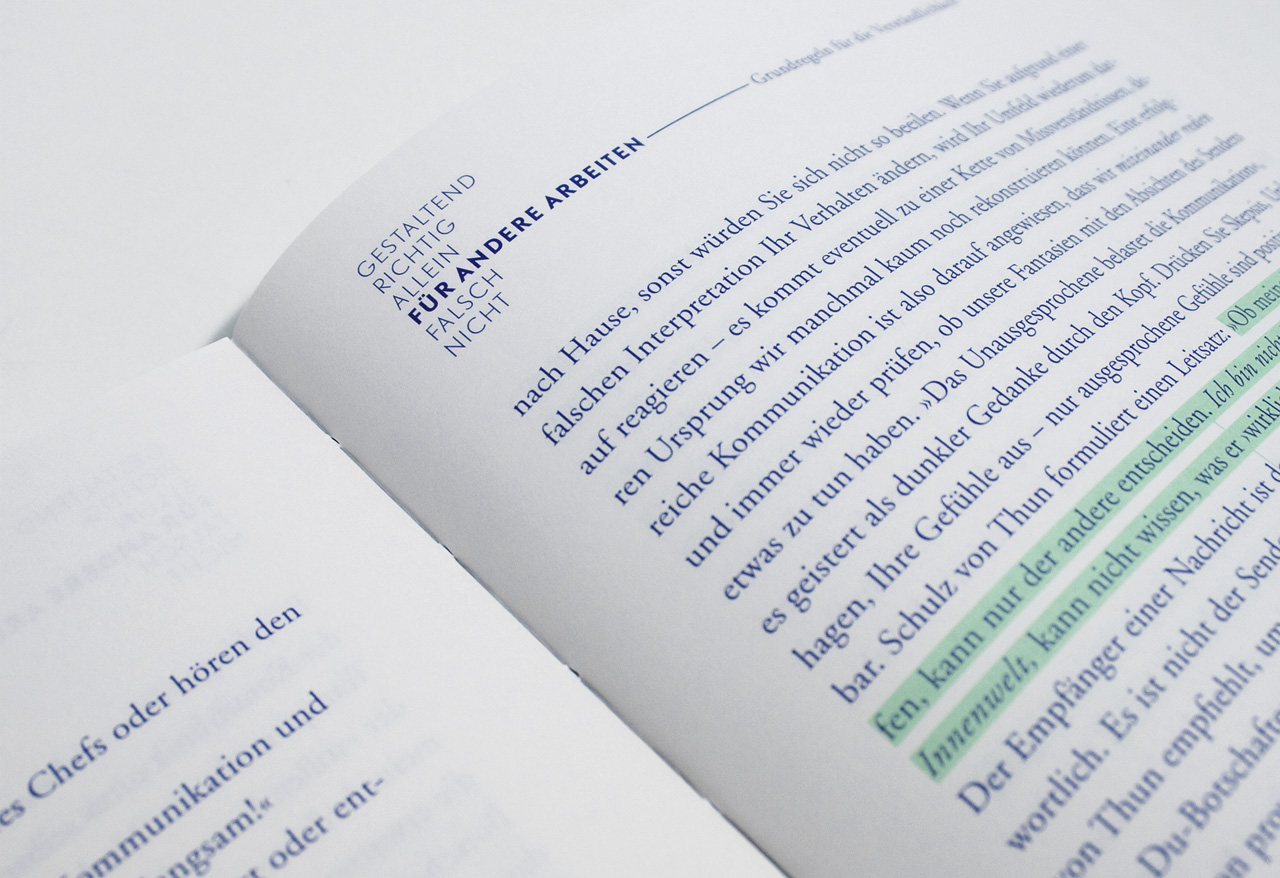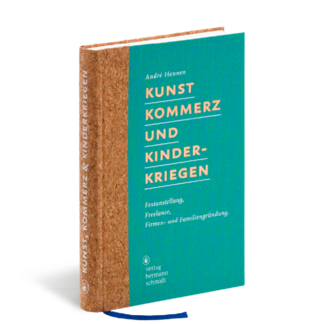Blick ins Buch
Ideas are a creative’s capital. If they don’t flow, the dream job turns into a nightmare.
Creative jobs are always remarkably fascinating when we do our own thing. This enriches the creative everyday, yet also bears risks. The lines between work and leisure become blurred, and identifying with our job makes it difficult to handle criticism and setbacks. Because we work so enthusiastically, it appears to our clients as though we were all living our hobby- and thus they keep demanding more for less and little money.
A lack of respect, unpaid pitches and entirely unrealistic deadlines threaten our motivation to work. This motivation, however, is the motor of our creativity…
Do I have to do what I want to do once more today?
There hardly is another occupational group for which reflection of the self is thus as important as it is for creative professionals. Frank Berzbach teaches psychology and media education, he knows the everyday business of design from up close. With professional distance he makes us aware of what it means to practice design. He illustrates ways for us to learn how to handle criticism and time pressure- and how we can escape the rat race of daily life. He illuminates inner and outer motivation and he discusses the advantages and disadvantages of teamwork and home office. He names the dangers of self-fulfillment and he does away with the myth of work-life-balance.
We recognize ourselves while reading- and we get to know ourselves better. And we understand that saying »no «, taking breaks, time off, and recharging are necessary if we want to act out our creative potential successfully in the long run.
Features and design
Living with Creativity is Frank Berzbach’s first book at Verlag Hermann Schmidt, and it was our first book without any images. Nevertheless, we asked Katrin Schacke for a draft that stood out from classic non-fiction. She plays with lively running headlines, colorful highlights and few fine lines in such a skilled way that, for several years, we received feedback stating it was not true that this book had no images
Contrary to bookbinding traditions, we concealed the cover material Skivertex with the endpaper directly. This way, the book achieved the smoothness we had in mind. The fact that it was then honored among the most beautiful German books despite this intentional bookbinding faux pas not only pleased us, but the courageous bookbinder too.
Living with Creativity
Psychology for Designers
design: Katrin Schacke
6th edition
192 pages, bi color-print in blue/ turquoise throughout
size 13.5 x 21 cm
thread-stitched flexcover made from Skivertex, with rounded corners and ribbon bookmark
Honored with the Award for Typographic Excellence by the Type Directors Club of NY.
Honored among the most beautiful German books.
Unbedingt auch für andere Freiberufler lesenswert, die Organisation nicht zu ihrem Lebensinhalt machen möchten.
creativ verpacken, August 2010
